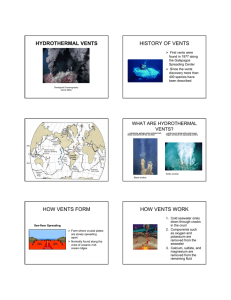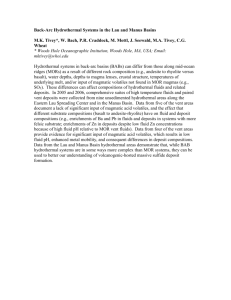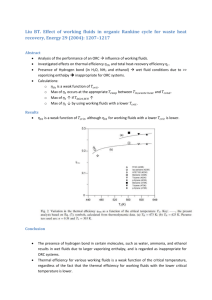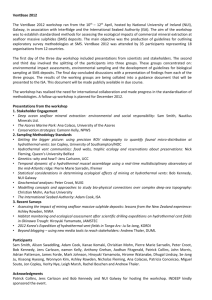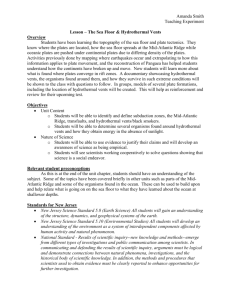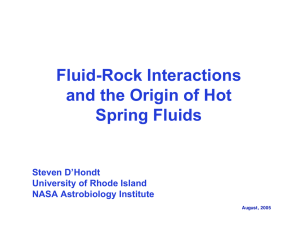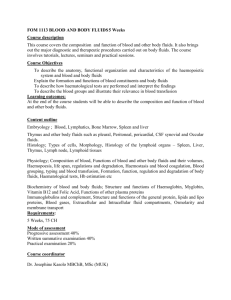Chemosymbiosis: animal – microbe – environment interactions
advertisement
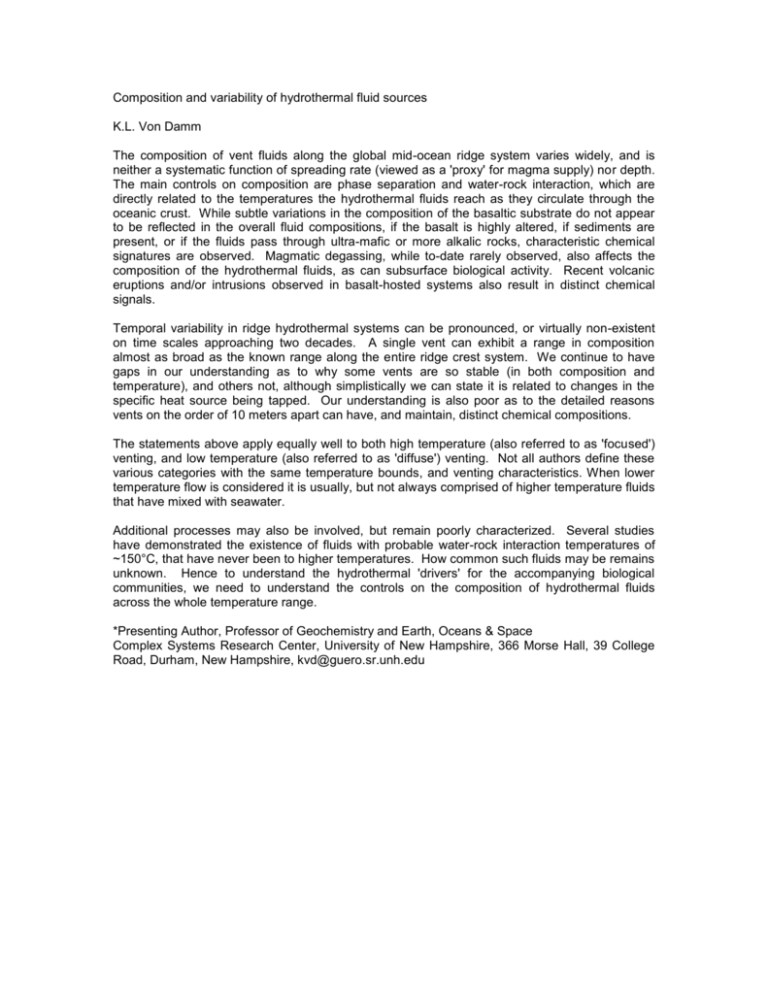
Composition and variability of hydrothermal fluid sources K.L. Von Damm The composition of vent fluids along the global mid-ocean ridge system varies widely, and is neither a systematic function of spreading rate (viewed as a 'proxy' for magma supply) nor depth. The main controls on composition are phase separation and water-rock interaction, which are directly related to the temperatures the hydrothermal fluids reach as they circulate through the oceanic crust. While subtle variations in the composition of the basaltic substrate do not appear to be reflected in the overall fluid compositions, if the basalt is highly altered, if sediments are present, or if the fluids pass through ultra-mafic or more alkalic rocks, characteristic chemical signatures are observed. Magmatic degassing, while to-date rarely observed, also affects the composition of the hydrothermal fluids, as can subsurface biological activity. Recent volcanic eruptions and/or intrusions observed in basalt-hosted systems also result in distinct chemical signals. Temporal variability in ridge hydrothermal systems can be pronounced, or virtually non-existent on time scales approaching two decades. A single vent can exhibit a range in composition almost as broad as the known range along the entire ridge crest system. We continue to have gaps in our understanding as to why some vents are so stable (in both composition and temperature), and others not, although simplistically we can state it is related to changes in the specific heat source being tapped. Our understanding is also poor as to the detailed reasons vents on the order of 10 meters apart can have, and maintain, distinct chemical compositions. The statements above apply equally well to both high temperature (also referred to as 'focused') venting, and low temperature (also referred to as 'diffuse') venting. Not all authors define these various categories with the same temperature bounds, and venting characteristics. When lower temperature flow is considered it is usually, but not always comprised of higher temperature fluids that have mixed with seawater. Additional processes may also be involved, but remain poorly characterized. Several studies have demonstrated the existence of fluids with probable water-rock interaction temperatures of ~150°C, that have never been to higher temperatures. How common such fluids may be remains unknown. Hence to understand the hydrothermal 'drivers' for the accompanying biological communities, we need to understand the controls on the composition of hydrothermal fluids across the whole temperature range. *Presenting Author, Professor of Geochemistry and Earth, Oceans & Space Complex Systems Research Center, University of New Hampshire, 366 Morse Hall, 39 College Road, Durham, New Hampshire, kvd@guero.sr.unh.edu

